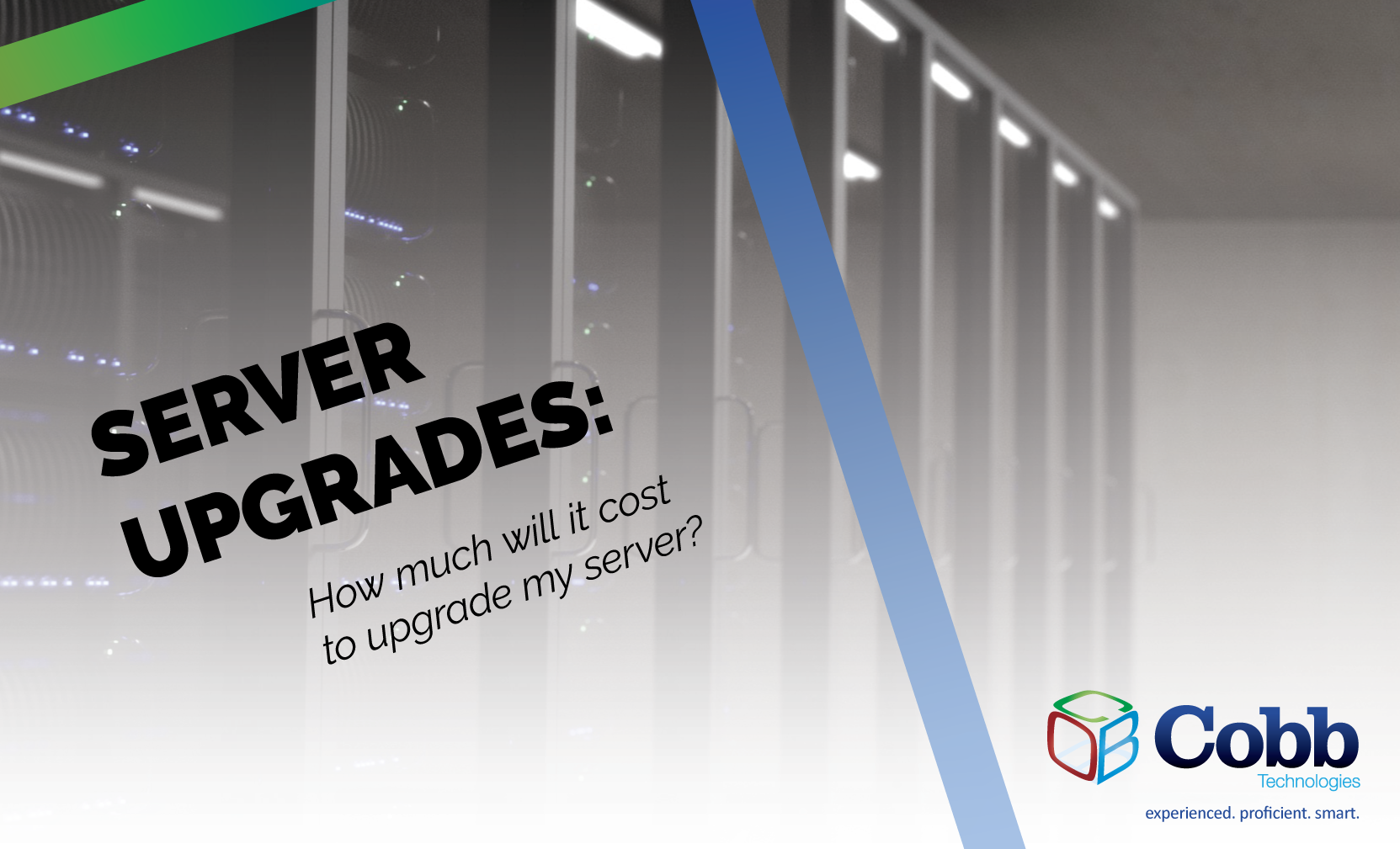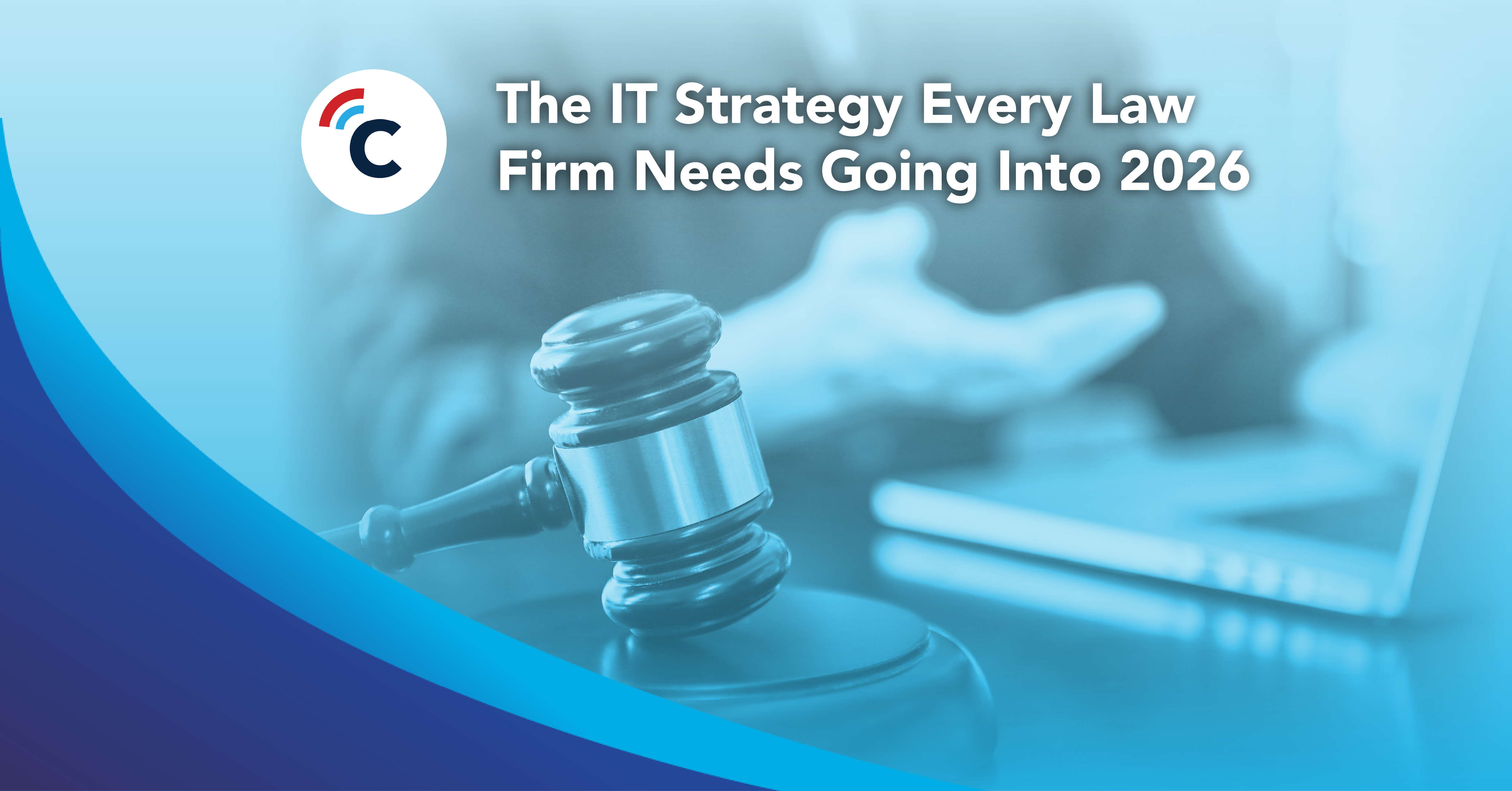11 min read
Best IT Strategies for Law Firms Going Into 2026
Why should a law firm invest in a strong modern IT strategy? Today’s legal teams depend on secure, reliable technology to protect sensitive...

This blog was updated on December 22, 2020.
Every piece of technology requires an upgrade from time to time. We’re all used to upgrading our phones every few years, shopping for a new laptop when our current one starts to wear out, and buying the latest and greatest smartwatches and fitness trackers.
But there’s one part of your offices’ tech solutions that needs to be upgraded every three-to-five years, and it’s something no one likes to think about: your server.
There’s this thing about servers — they’re complicated. And as we’ve gone over before in regards to IT solutions, the more complicated something is, the more it costs.
There are a few factors that will play a major role in determining how much your server upgrade project will cost:
With these cost factors, you can determine the complexity of your server upgrade. Here are some cost breakdowns of a low, medium, and high cost server upgrade with respect to SMB’s:
Low Complexity: The most basic server functions for a SMB
Domain services server
Associated hardware cost: $1,500
Labor: $1,200 - $1,500
Total upgrade cost: $3,000
Medium Complexity: Most common scenario for a SMB
Domain services, print services, file services, and application services
Associated hardware cost: $3,500 - $5,000
Labor: $4,000
Total upgrade cost: $8,000 - $10,000
High Complexity: Uncommon but still a possible scenario for a SMB
Multiple servers (3 or more) with virtualization
Associated hardware cost: $15,000 - $25,000
Labor: $10,000 - $15,000
There are two main reasons businesses upgrade servers: your business has outgrown your old server, or the shelf life of your server has come to pass. Servers are generally upgraded every three-to-five years, for two reasons: parts wear out, and software requires more and more server load (bandwidth) as technology and functionality advance.
During these upgrades, you’ll almost always want to purchase a more powerful server — this is mainly for the reasons stated above. You’ll also want to make sure that you’re not only upgrading to a more powerful server, but upgrading to a server that will facilitate and handle your projected growth and usage for the next three-to-five years.
There’s a lot that goes into deciding what your server needs. Here are a few questions you can ask yourself to get started, most of these questions are determined by whatever type of software you use (ex. AutoCad, Quickbooks, Sage):
By answering these questions, you can lay out a plan for your server upgrade.
Servers are basically a computer just like any other — except they’re specialized for processing, storing, and managing a high volume of data while adding in redundancy. This added redundancy combined with specialized components are what causes the price of a server to vary so wildly.
If you want to increase the load your server can handle, you have a few options: create multiple servers, upgrade the specs of a single server, or both. As you increase the specs or number of servers, however, your associated costs will rise dramatically. When upgrading your server, there is most definitely a balance between adding enough specs to facilitate your business’ needs for the next three-to-five years, and not going overboard.
Hard drives and power supplies have the highest frequency of failure in a server — and because of this, these are the focused areas of redundancy — and as such, are potential cost factors in your server hardware.
RAID (Redundant Array of Individual Disks) is, as its name implies, another method of adding redundancy to your server. There are multiple ways of setting up a RAID, with the most basic type acting as a simple mirror, and others spreading redundancy across many different disks. RAID, while a standard on most server installations, does add an additional cost onto your server, usually around 15% of the total cost. Think of the ABS brakes in your car — additional, but standard.
Most servers also come with redundant power supplies — this will add a barely noticeable increase to your total cost for upgrading your server.
Other components that will affect your costs are how much memory your server will need, as well as how much processing power will be required to run your environment. Again, the more you need, the higher the cost.
As you get into more complex server environments with requirements for high amounts of storage, processing and memory, you will probably enter the world of virtualization. Here, the costs associated with server hardware needed for a virtual environment vary widely and escalate quickly.
Virtualization gives you the ability to create multiple virtual servers that live on a single physical server (known as a host server). These virtual servers connect and communicate with your physical server via VMware or Hyper-V, which are known as hypervisors. VMware is mostly used for heavy duty servers, and Hyper-V, Microsoft’s proprietary hypervisor, is good for SMBs that need the added functionality of a virtual server, but don’t require massive server loads.
There are a few main cost factors associated with virtualization. Since the specs on the physical or host server need to be much higher than a standard server, you can expect a basic host server to cost somewhere in the range of $7,000 to $10,000. And in order to install, labor (which is more expensive due to the complex nature of virtualization requiring a specialized engineer) coming in at around $5,000. In total, virtualization can cost upwards of $15,000.
Adding a SAN (Storage Area Network) is a way to increase server robustness in a virtual environment as well. A SAN is a bank of hard drives that act as a storage center as part of a virtual environment. SANs are hot-swappable — meaning storage can be added or moved to a server without any interruptions in your daily operations. SANs have the potential to be very expensive — small SANs can cost around $2,500, and large SANs can cost $50,000 or more.
Some servers will require multiple SANs, but for most businesses, this is an extravagance.
As is the case with everything in tech, there are multiple levels of complexity within SAN, and as you add more complexity, you add more to your cost.
A backup server is more than just duplicates of files — it’s a snapshot of your server as it existed at that particular time. Your backup server is essentially another server in addition to your primary server, but with the purpose of storing the snapshots.
If your server goes down, your backup will kick in — picking up from the last saved snapshot. Because a backup server will save multiple server snapshots, and store them for a length of time from one month to one year, your backup server will always require more storage space than your primary server. Backup servers can range from $5,000 to $10,000.
If a project of this complexity seems like it will cost a lot of time and money, you are correct. Server upgrades are no small task, and can cause massive delays in your business’ daily operations.
While on-site servers are an absolute must for organizations subject to certain industry standards and regulations, such as HIPAA, most businesses can benefit from the use of cloud services.
Cloud services such as Google Cloud, Amazon Web Services, and Microsoft Azure can take the place of your organization’s on-site server. Cloud servers function via all of the hardware described in this blog above — from RAID to SAN, and hard drives to backups — but are managed by service providers, rather than your own company.
While it may seem counter-intuitive to outsource your company’s data, cloud services are highly secure, quickly adaptable server solutions. Rather than going through the entire process listed above, cloud servers can be turned on and off at the click of a button.
Cloud servers are also usually more secure than their on-site counterparts, because they are updated more frequently, have a more robust, decentralized system of storage than on-site servers, and come with the backing of a tech giant’s security protocols.
It is also worth mentioning that an on-site server is in no way a one-time cost. Your on-site server will require monthly, weekly, and even daily maintenance. The costs of maintaining an on-site server are often comparable to those of a subscription for a cloud server.
Cloud servers give you the benefit of saving time and energy on your server maintenance, while also costing a whole lot less overall. If you’d like to learn more about cloud services, check out our blog, How Much Do Cloud Services Cost?

11 min read
Why should a law firm invest in a strong modern IT strategy? Today’s legal teams depend on secure, reliable technology to protect sensitive...

2 min read
The Louvre’s password became the punchline of a global story after a heist revealed major security concerns for the museum. Reports say the password...

6 min read
Organizations of all sizes handle enormous volumes of data. Data is one of the most valuable assets of any organization.Unfortunately, it’s also a...